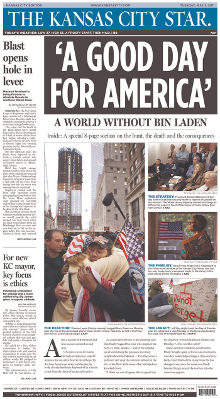
The Kansas City Star is a newspaper based in Kansas City, Missouri. Published since 1880, the paper is the recipient of eight Pulitzer Prizes.

The Star Tribune is an American daily newspaper based in Minneapolis, Minnesota. It is Minnesota's largest newspaper and the eighth-largest in the United States by circulation, and is distributed throughout the Minneapolis–Saint Paul metropolitan area, the state, and the Upper Midwest.
The Second Battle of Springfield took place during the American Civil War on January 8, 1863, in Springfield, Missouri. It is sometimes known as The Battle of Springfield. Fighting was urban and house-to-house, which was rare in the war.
The Washington Star, previously known as the Washington Star-News and the Washington Evening Star, was a daily afternoon newspaper published in Washington, D.C., between 1852 and 1981. The Sunday edition was known as the Sunday Star. The paper was renamed several times before becoming Washington Star by the late 1970s.
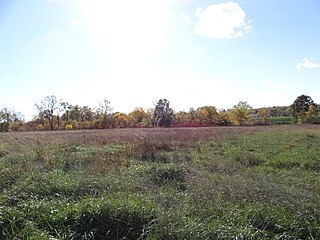
The Battle of Marais des Cygnes took place on October 25, 1864, in Linn County, Kansas, during Price's Missouri Campaign during the American Civil War. It is also known as the Battle of Trading Post. In late 1864, Confederate Major-General Sterling Price invaded the state of Missouri with a cavalry force, attempting to draw Union troops away from the primary theaters of fighting further east. After several victories early in the campaign, Price's Confederate troops were defeated at the Battle of Westport on October 23 near Kansas City, Missouri. The Confederates then withdrew into Kansas, camping along the banks of the Marais des Cygnes River on the night of October 24. Union cavalry pursuers under Brigadier General John B. Sanborn skirmished with Price's rearguard that night, but disengaged without participating in heavy combat.

The Battle of Mine Creek, also known as the Battle of Little Osage, was fought on October 25, 1864, in Linn County, Kansas, as part of Price's Missouri Campaign during the American Civil War. Major-General Sterling Price had begun an expedition in September 1864 to restore Confederate control of Missouri. After being defeated at Westport near Kansas City on October 23, Price's army began to retreat south through Kansas. Early on October 25, Price's army was defeated at the Marais des Cygnes. After Marais des Cygnes, the Confederates fell back, but were stalled at the crossing of Mine Creek while a wagon train attempted to cross.

The battle of Cane Hill was fought between Union and Confederate forces during the American Civil War on November 28, 1862, in northwestern Arkansas, near the town of Cane Hill. Confederate Major General Thomas C. Hindman had made an abortive offensive into southwestern Missouri from Arkansas earlier in the year, but had withdrawn to Arkansas. Union troops under Brigadier General James G. Blunt had followed Hindman into northwestern Arkansas, and the Confederate general saw an opportunity to attack Blunt while his division was separated from the rest of the Union Army of the Frontier. Hindman then sent a force under Brigadier General John S. Marmaduke to Cane Hill, which was also known as Boonsboro, to collect supplies. In early November, a detachment of Blunt's command led by Colonel William F. Cloud defeated a small Confederate force commanded by Colonel Emmett MacDonald in the Cane Hill area.

The Battle of Westport, sometimes referred to as the "Gettysburg of the West", was fought on October 23, 1864, in modern Kansas City, Missouri, during the American Civil War. Union forces under Major General Samuel R. Curtis decisively defeated an outnumbered Confederate force under Major General Sterling Price. This engagement was the turning point of Price's Missouri Expedition, forcing his army to retreat. The battle ended the last major Confederate offensive west of the Mississippi River, and for the remainder of the war the United States Army maintained solid control over most of Missouri. This battle was one of the largest to be fought west of the Mississippi River, with over 30,000 men engaged.

The Second Battle of Independence was fought on October 22, 1864, near Independence, Missouri, as part of Price's Raid during the American Civil War. In late 1864, Major General Sterling Price of the Confederate States Army led a cavalry force into the state of Missouri, hoping to create a popular uprising against Union control, draw Union Army troops from more important areas, and influence the 1864 United States presidential election.

The Battle of Little Blue River was fought on October 21, 1864, as part of Price's Raid during the American Civil War. Major General Sterling Price of the Confederate States Army led an army into Missouri in September 1864 with hopes of challenging Union control of the state. During the early stages of the campaign, Price abandoned his plan to capture St. Louis and later his secondary target of Jefferson City. The Confederates then began moving westwards, brushing aside Major General James G. Blunt's Union force in the Second Battle of Lexington on October 19. Two days later, Blunt left part of his command under the authority of Colonel Thomas Moonlight to hold the crossing of the Little Blue River, while the rest of his force fell back to Independence. On the morning of October 21, Confederate troops attacked Moonlight's line, and parts of Brigadier General John B. Clark Jr.'s brigade forced their way across the river. A series of attacks and counterattacks ensued, neither side gaining a significant advantage.
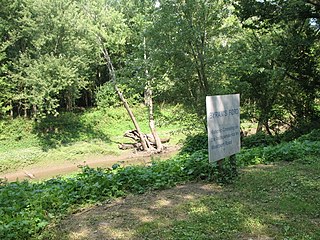
The Battle of Byram's Ford was fought on October 22 and 23, 1864, in Missouri during Price's Raid, a campaign of the American Civil War. With the Confederate States of America collapsing, Major General Sterling Price of the Confederate States Army conducted an invasion of the state of Missouri in late 1864. Union forces led Price to abandon goals of capturing the cities of St. Louis and Jefferson City, and he turned west with his army towards Kansas City.
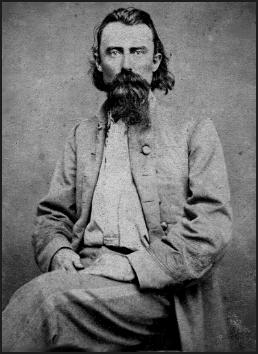
Joseph Orville "J.O." Shelby was a senior officer of the Confederate States Army who commanded cavalry in the Trans-Mississippi Theater of the American Civil War. After the Confederacy surrendered, Shelby tried to swear fealty to Emperor Maximilian I during the French invasion of Mexico. With the Emperor's permission, Shelby formed a colony of Confederate exiles in Mexico until the defeat of the French, then abandoned the operation.

Price's Missouri Expedition, also known as Price's Raid or Price's Missouri Raid, was an unsuccessful Confederate cavalry raid through Arkansas, Missouri, and Kansas in the Trans-Mississippi Theater of the American Civil War. Led by Confederate Major General Sterling Price, the campaign aimed to recapture Missouri and renew the Confederate initiative in the larger conflict.
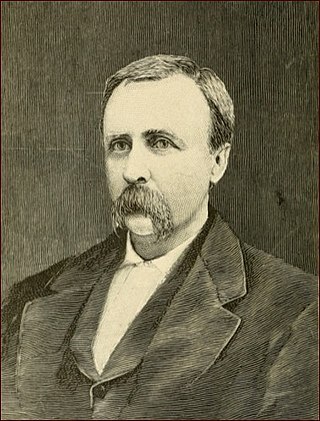
Major John Newman Edwards was famed General Joseph O. Shelby's adjutant during the American Civil War, an author, and a pro-Confederate journalist who founded the Kansas City Times. He is perhaps best known for contributing to the folk hero status of outlaw Jesse James.
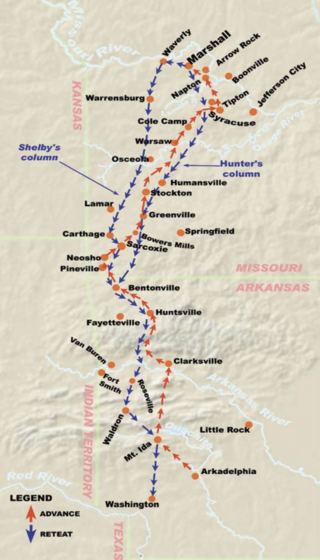
Shelby's Raid, also known as Shelby's Great Raid, was a Confederate cavalry incursion into Arkansas and Missouri during the American Civil War in 1863. Led by Colonel Joseph Orville Shelby, the raid took place from August 21, 1863, to November 3, 1863, covering over 800 miles across territories in west central and northwest Arkansas, as well as southwest and west central Missouri.

Shelby's Iron Brigade, also known as the Missouri Iron Brigade, was a Confederate cavalry brigade, led by Brigadier General Joseph O. Shelby, in the Trans-Mississippi Theater of the American Civil War.
The Hutchinson News is a daily newspaper serving the city of Hutchinson, Kansas, United States. The publication was awarded the 1965 Pulitzer Prize for Public Service "for its courageous and constructive campaign, culminating in 1964, to bring about more equitable reapportionment of the Kansas Legislature, despite powerful opposition in its own community."

John Courtney Moore was an American politician and journalist who served as the first mayor of Denver from 1859 to 1861. He was an early settler of Denver, while the area was still a territory of the United States. Moore was a newspaper journalist and publisher, working on papers in Denver, St. Louis, Kansas City, and Pueblo, Colorado. During the American Civil War, he was a judge adjutant general and colonel in the Confederate States Army.
Slayback's Missouri Cavalry Regiment was a cavalry regiment of the Confederate States Army during the American Civil War. Originally formed as Slayback's Missouri Cavalry Battalion, the unit consisted of men recruited in Missouri by Lieutenant Colonel Alonzo W. Slayback during Price's Raid in 1864. The battalion's first action was at the Battle of Pilot Knob on September 27; it later participated in actions at Sedalia, Lexington, and the Little Blue River. In October, the unit was used to find an alternate river crossing during the Battle of the Big Blue River. Later that month, Slayback's unit saw action at the battles of Westport, Marmiton River, and Second Newtonia. The battalion was briefly furloughed in Arkansas before rejoining Major General Sterling Price in Texas in December. Probably around February 1865, the battalion reached official regimental strength after more recruits joined.

Forest Hill Calvary Cemetery is a cemetery in Kansas City, Missouri.















